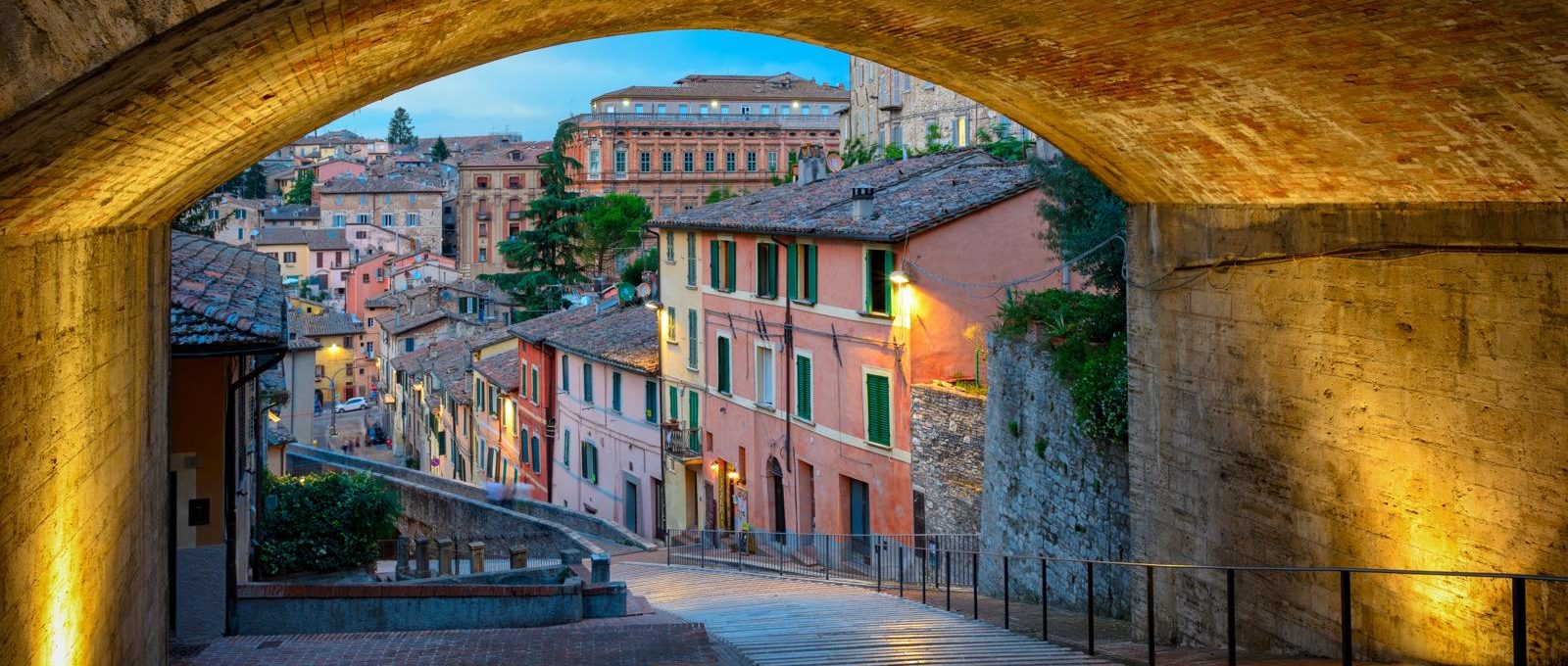You have already visited the city from top to bottom and want to take an alternative itinerary? Walk down from Piazza IV Novembre through the suggestive Via della Maestà delle Volte, then turn to Via Baldeschi. Take the stairway on your left. At the end of it, you’ll notice that the road splits forming a raised pedestrian walkway skirted by lateral parapets. The path develops independently through the buildings and alleys. Just walk along it and enjoy a beautiful view of the city from above. What you are walking on, is nothing other than the city’s thousand-year old Medieval Aqueduct.
Built in 1254 to meet the increasing water demand of the city whose population was rapidly growing. The aqueduct is 4 Km (2.5 miles) long and starts from the water-rich mount Pacciano.
Like most of the history of Perugia and its monument, also the aqueduct has a very turbulent past. The construction works began in 1254, but were quickly suspended. Maybe because the architect died or simply because the ambitious project revealed to be harder than expected. The works were resumed in 1276, with Boninsegna as the architect appointed by Fra Bevignate. Apparently, the architect was the only one willing to pick up such challenge, but he certainly was up to the task. Making water go uphill wasn’t easy, but Boninsegna implemented an ingenious system of communicating vessels and lead pipes. The magnitude and importance of the work were celebrated with another monument that served as “terminal” to the whole system. It was Fontana Maggiore (the Main Fountain), built in 1278.
To this day the aqueduct is well preserved and parts of it in the city centre can be walked. Unfortunately the peripheral part has fallen in a state of abandonment.



